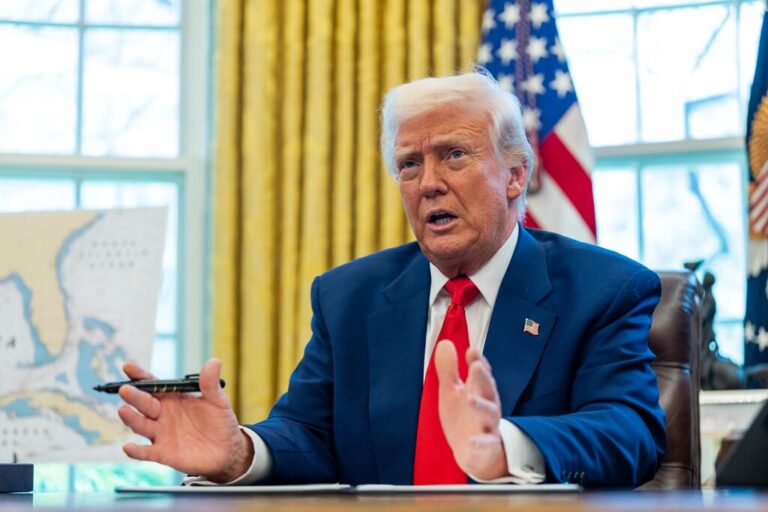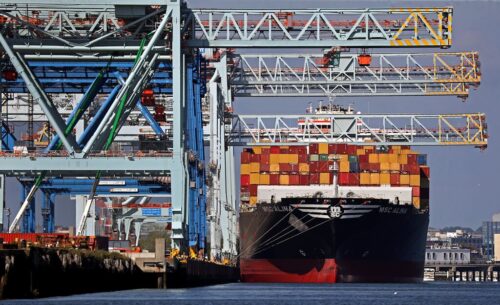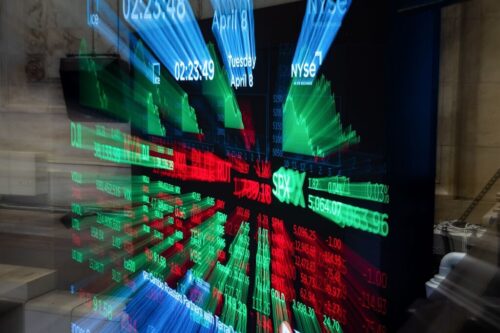This column is from Trendlines, my business newsletter that covers the forces shaping the economy in Boston and beyond. If you’d like to receive it via email on Mondays and Thursdays, sign up here.
It was the pause that failed to refresh.
President Trump may have avoided economic disaster Wednesday when he put “reciprocal” tariffs on hold for scores of countries. But his attempt to isolate the United States behind a massive tariff wall has inflicted significant — perhaps permanent — damage nonetheless.
After a day spent assessing Trump’s sudden about-face, investors on Thursday sent stocks into a renewed tailspin. An upbeat inflation report wasn’t nearly enough to prolong the blistering rally the president had ignited Wednesday with a single social media post announcing his 90-day suspension of tariffs that had taken effect just hours earlier.
Why? First, Trump kept other new import taxes in place that will put upward pressure on prices. He has also undermined trust in the United States as an ally — and as a safe place to invest. And he escalated the trade fight with China, which is unlikely to back down.
The ill-conceived battle over “reciprocal” duties is over for now, investors concluded, but the broader trade war is not.
The market was already lower when the Labor Department reported that the Consumer Price Index rose at a slower-than-expected annual rate of 2.4 percent in March, down from 2.8 percent in the prior month. Core CPI, which excludes more volatile food and energy prices, increased by 2.8 percent, the slowest pace in four years.
But the CPI reading is old news, especially given how fast things are changing on the trade front.
“It is the calm before the inflation storm. We’re going to get some higher inflation out of the tariffs,” David Kelly, chief global strategist at JP Morgan Asset Management, told Bloomberg Television.
After the briefest of upticks, stocks continued to fall, with the Standard & Poor’s 500 index ending the day down 3.5 percent. It’s off 12 percent since Trump’s inauguration. US stocks overall shed $5.4 trillion from Trump’s first day in office through Wednesday.
The Trump administration said Thursday the new tariff rate on China is 145 percent, including the earlier 20 percent imposed as punishment for what the White House called its failure to stop fentanyl trafficking into the United States. (The president on Wednesday had said the total rate was 125 percent.)
The revised rate, up from 10 percent before Trump’s second term, combined with other new duties leaves the average US tariff rate up much more than 20 percentage points from 2 percent last year.
At the new rate, the China tariff would add 1.9 percentage points to CPI inflation over the next year, according to Moody’s Analytics.
The 10 percent “baseline” tariff on most countries, which remains in force, along with 25 percent taxes on autos, steel, and aluminum imports, will add 0.8 percentage point to CPI.
All told, just the tariffs that are in place now could push inflation back toward 5.5 percent, where it was at the start of 2023.
Accelerating inflation would put the Federal Reserve between a rock and a hard place. Instead of cutting lending rates to help an economy that was already slowing, it may have to keep them elevated. That means little relief for consumers on mortgages or credit card balances, and a tougher job market.
As Fed officials wait for a clearer picture on how tariffs will hit the economy, keeping rates steady is the best approach “for the time being,” Susan M. Collins, president of the Federal Reserve Bank of Boston, said in a speech in Washington on Thursday.
The United States has long been a safe haven for investors during tumultuous times. US government bonds and the dollar usually gain value when stocks are crashing.
But that hasn’t been the case recently. Economists blame Trump’s antagonistic treatment of allies, the chaos created by his varying and contradictory rationale for tariffs, and his drive to isolate the country from the rest of the world, even if it causes a recession.
Trump seemed willing to ignore plunging stock prices. But he backed off when the government bond market, the central nervous system of global finance, began to melt down.
“Typically when there is a crisis, money comes flowing into the US,” said Mark Zandi, chief economist at Moody’s Analytics. “Not this time. Global investors may be losing faith in the US.”
The dollar and long-term Treasury bonds fell on Thursday.
Still, Trump didn’t back down with China. He doubled down, even though a long trade war with the world’s second-largest economy would be costly.
Many US companies rely on Chinese partners for manufacturing or key components of their own products. China’s factories churn out inexpensive consumer goods that have kept US consumer prices low.
China supplies about three-quarters of the smartphones, laptops, and toys sold here, according to Wendong Zhang, an assistant professor of applied economics and policy at Cornell University. It’s also an important source of antibiotics for US livestock production.
Zhang says Beijing is willing to go toe-to-toe with Trump on tariffs for a long time. Finding new suppliers will be expensive for US manufacturers and retailers.
“The recent tariff hikes plus retaliations from China and the EU are projected to lead to more than 2.5 percent long-term real GDP loss for the US and even higher for China,” Zhang said. “Even though China understands it will pay a much higher economic costs in percentage terms, the international political economy calculations mean that they are likely to stick to their guns.”
It may be helpful to think of Trump’s trade war as the economic analog of the Cold War.
The president blinked, just as Nikita Khrushchev did in his showdown with John F. Kennedy over Cuba. The 1962 missile crisis was resolved, but the confrontation with the Soviet Union dragged on.
The fight with China continues, with the outcome — and costs to the economy — uncertain.
That’s why Wednesday’s stock market celebration was so short-lived.
‘Don’t want to overreact’: On-again, off-again tariffs put small businesses in a bindCould Trump’s trade war be his ‘Nixon shock’ moment?‘Worse than the worst-case scenario’: World tallies staggering cost of Trump’s protectionism




Comment count: